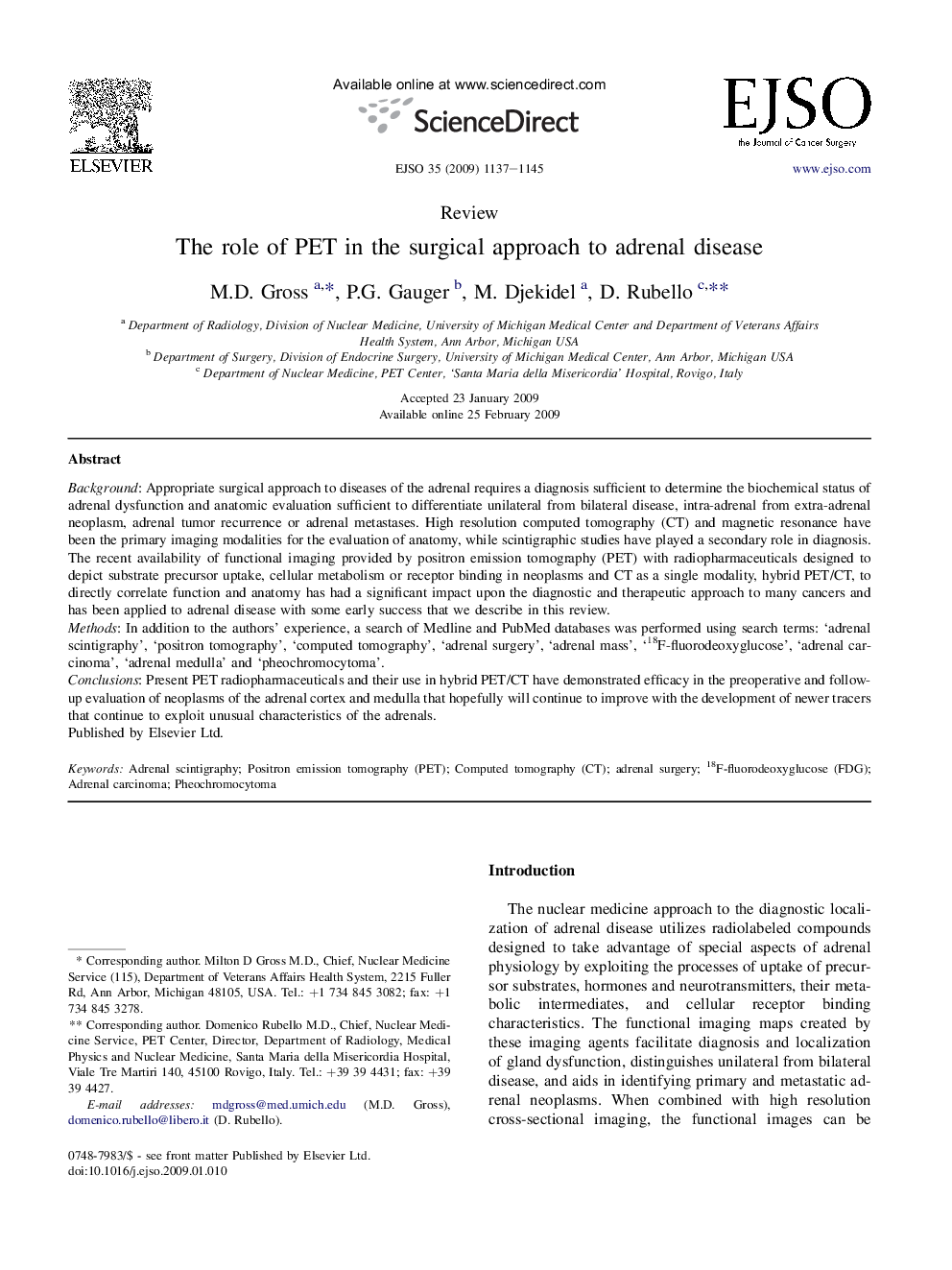| Article ID | Journal | Published Year | Pages | File Type |
|---|---|---|---|---|
| 3986193 | European Journal of Surgical Oncology (EJSO) | 2009 | 9 Pages |
BackgroundAppropriate surgical approach to diseases of the adrenal requires a diagnosis sufficient to determine the biochemical status of adrenal dysfunction and anatomic evaluation sufficient to differentiate unilateral from bilateral disease, intra-adrenal from extra-adrenal neoplasm, adrenal tumor recurrence or adrenal metastases. High resolution computed tomography (CT) and magnetic resonance have been the primary imaging modalities for the evaluation of anatomy, while scintigraphic studies have played a secondary role in diagnosis. The recent availability of functional imaging provided by positron emission tomography (PET) with radiopharmaceuticals designed to depict substrate precursor uptake, cellular metabolism or receptor binding in neoplasms and CT as a single modality, hybrid PET/CT, to directly correlate function and anatomy has had a significant impact upon the diagnostic and therapeutic approach to many cancers and has been applied to adrenal disease with some early success that we describe in this review.MethodsIn addition to the authors' experience, a search of Medline and PubMed databases was performed using search terms: ‘adrenal scintigraphy’, ‘positron tomography’, ‘computed tomography’, ‘adrenal surgery’, ‘adrenal mass’, ‘18F-fluorodeoxyglucose’, ‘adrenal carcinoma’, ‘adrenal medulla’ and ‘pheochromocytoma’.ConclusionsPresent PET radiopharmaceuticals and their use in hybrid PET/CT have demonstrated efficacy in the preoperative and follow-up evaluation of neoplasms of the adrenal cortex and medulla that hopefully will continue to improve with the development of newer tracers that continue to exploit unusual characteristics of the adrenals.
